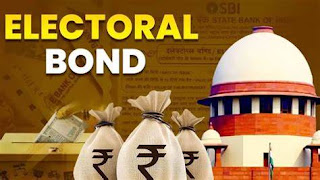Bengali cuisine is a symphony of flavors, bursting with vibrant curries, rich sweets, and an emphasis on fresh, seasonal ingredients. But nestled amongst the bold and beloved dishes lies a humble hero often overlooked - Shukto.
Shukto, meaning "mixed" in Bengali, is a vegetable medley simmered in a light, flavorful broth. Unlike its flashier counterparts, Shukto doesn't boast a vibrant red hue or a thick, gravy-like consistency. Instead, its beauty lies in its simplicity and versatility.
A Culinary Journey Through Time
There are mentions of Shukto in ancient Bengali texts like the Mangal Kavya, hinting at its long and cherished presence in Bengali culture. It is believed to have even found a place in Ayurveda, the traditional Indian system of medicine, valued for its use of various vegetables with potential health benefits.
A Symphony of Vegetables
The beauty of Shukto lies in its adaptability. There's no fixed recipe, allowing families to personalize it based on seasonal produce and preferences. Common vegetables include bitter gourd, chayote squash, leafy greens, eggplant, and drumsticks. Panch Phoron, the five-spice blend of cumin, nigella, fenugreek, fennel, and wild celery seeds, adds a depth of aroma.
The Star of the Show (or Maybe the Starter)
Traditionally, Shukto holds a place of prominence on the Bengali thali (plate). It's often served as the first course, its light broth believed to aid digestion for the richer dishes to follow. The subtle bitterness of some vegetables is perfectly balanced by the sweetness of jaggery or a hint of sugar, creating a symphony of flavors that awakens the palate.
Beyond Borders, Beyond Occasions
While Shukto is a staple in Bengali homes, it transcends borders and occasions. It finds variations across Bangladesh and eastern India, each region adding its own twist. Whether it's a grand wedding feast or a simple everyday meal, Shukto remains a constant, a comforting reminder of culinary heritage.
How to Cook Shukto
**Ingredients:**
- 1 bitter gourd, sliced
- 1 chayote squash, diced
- 1 small eggplant, diced
- 1 cup drumsticks, cut into 2-inch pieces
- 1 cup leafy greens (like spinach or amaranth)
- 1 tablespoon Panch Phoron
- 2 tablespoons mustard oil
- 1 teaspoon ginger paste
- 1 teaspoon turmeric powder
- 1 teaspoon sugar (or jaggery)
- Salt to taste
- 4 cups water
**Instructions:**
1. **Prep the Vegetables:** Wash and cut all the vegetables into bite-sized pieces. Soak the bitter gourd in salt water for 10 minutes to reduce its bitterness.
2. **Cook the Bitter Gourd:** Heat mustard oil in a large pan. Fry the bitter gourd pieces until they turn golden brown. Remove and set aside.
3. **Tempering:** In the same pan, add a bit more mustard oil if needed. Add the Panch Phoron and let it splutter.
4. **Add Vegetables:** Add the ginger paste and sauté for a minute. Then add the drumsticks, chayote squash, and eggplant. Stir well.
5. **Spice It Up:** Add turmeric powder, salt, and the fried bitter gourd. Mix everything well.
6. **Simmer:** Add water and bring it to a boil. Lower the heat and let it simmer for about 15-20 minutes, until the vegetables are tender.
7. **Finishing Touches:** Add the leafy greens and cook for another 5 minutes. Stir in the sugar or jaggery and adjust the seasoning.
8. **Serve:** Serve hot with steamed rice as a starter or as a side dish.
**So, the next time you delve into the delightful world of Bengali cuisine, don't underestimate the unassuming Shukto. It's a testament to the power of simplicity, a dish that quietly steals the show, one flavorful bite at a time.**
Feel free to share your experiences and tips in the comments section below. Happy cooking!
.png)





